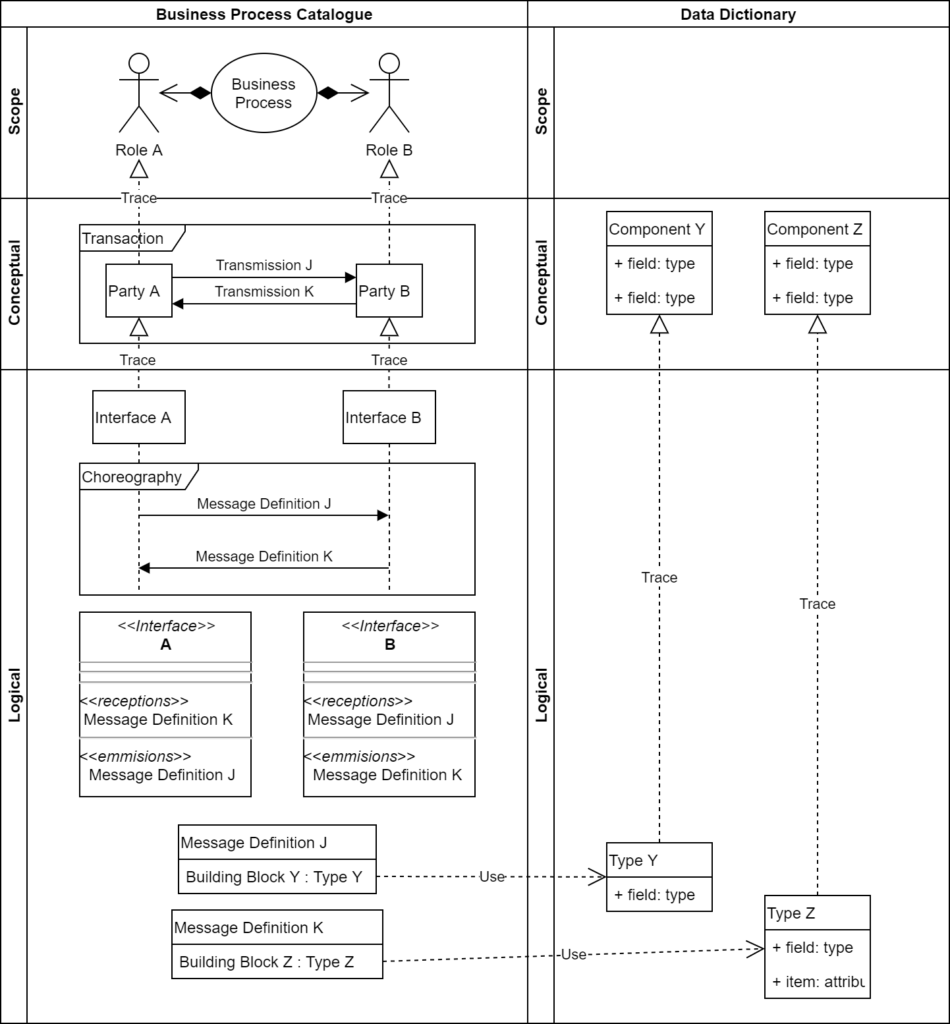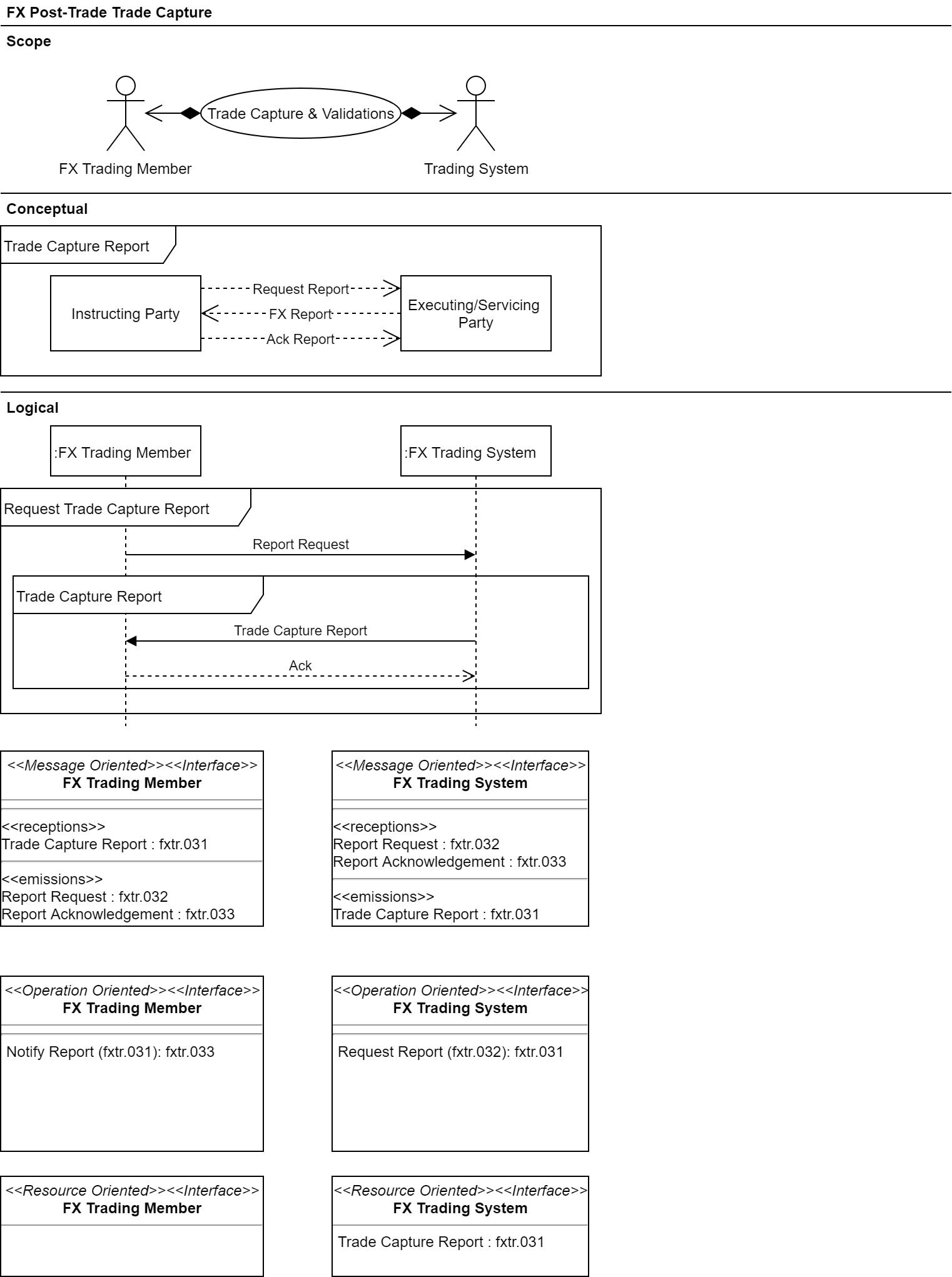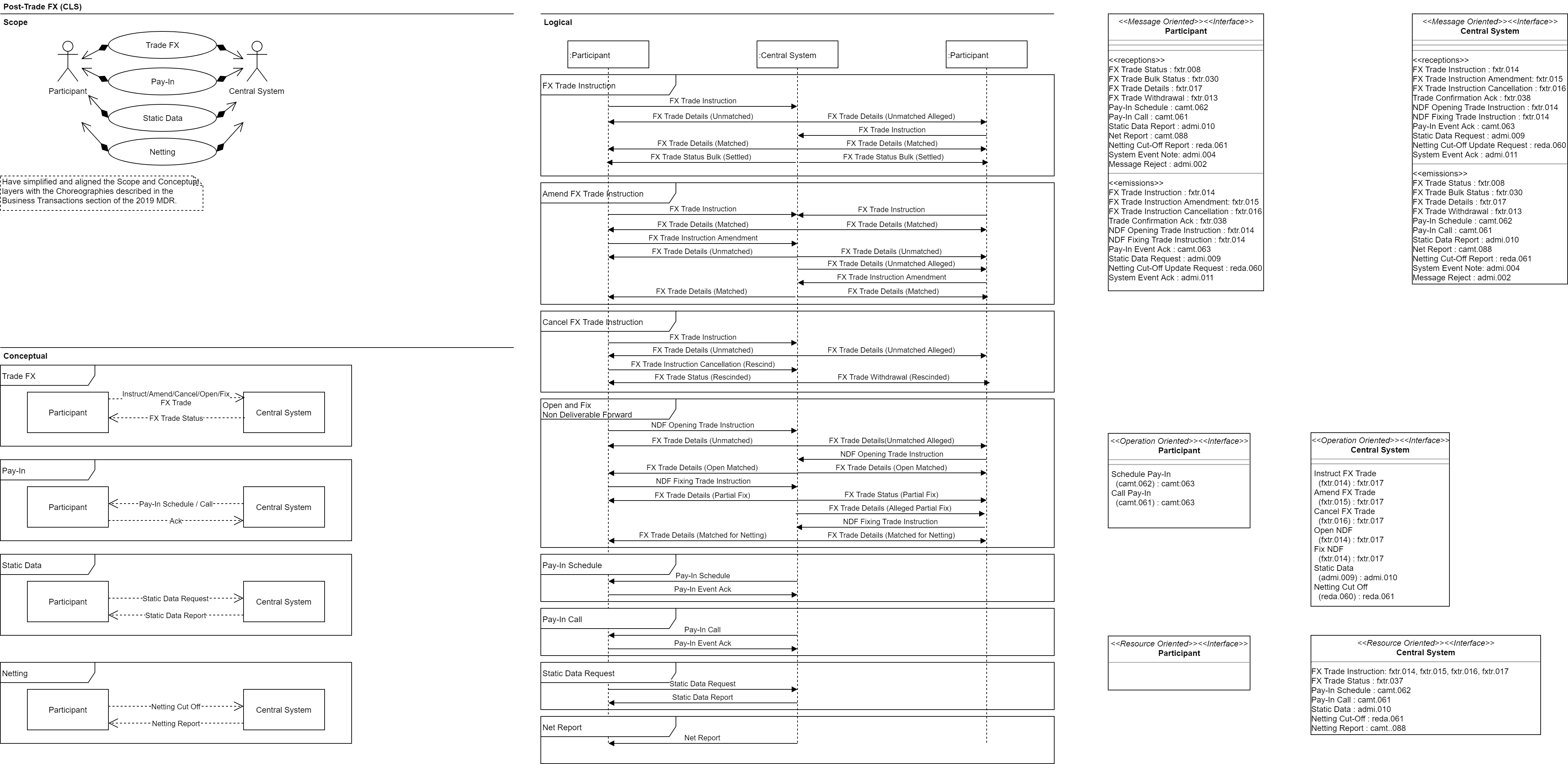Flow
The flow of modelling messages is usually:
- Begin with describing the Business Process, and the roles within.
- Describe the communication between participants required to complete a transaction within the process.
- Define the participants interfaces and the messages used to communicate.
- Detail the content of messages,
- reusing and expanding existing concepts.

Business Process Catalogue
To help people understand the communication flows, it’s important for Message Definition Reports to describe the business process catalogue items in a simple and consistent way. Each level uses UML diagrams.
- Scope = Use Case Diagram
- Conceptual = Information Flow diagram in a frame.
- Logical = Sequence Diagrams + Interface Class Diagrams.
The Scope level’s Use Case Diagram shows the roles in each process.
The Conceptual level’s Information Flow is shown in a frame, that represents the transaction in which participants send and receive transmissions.
The Logical level’s class diagrams show Interfaces specified for each participant. Sequence diagrams illustrate their choreography. It also has class diagrams showing how each Message Definition comprises several Message Building Blocks, whose component types are defined in the Data Dictionary.
Data Dictionary
The Logical level class diagrams show the Message Component Type’s Elements and their types. These are generally hierarchical in nature,
so are often easier to show as a property tree.
In order to use a common language across messages, these are derived from Conceptual level Business Components . They generally have the same name, however as the logical components are more specific having fewer elements, they are appended with a number.
Conceptual level class diagrams show Business Component’s Elements and their types. These are generally highly networked in nature, so only selected relationships are usually shown, in the context of a business area.
Let’s begin with some of the simpler business areas.
Foreign Exchange
Foreign Exchange has two submitting organisations: CLS and CFETS
CFETS


CLS
